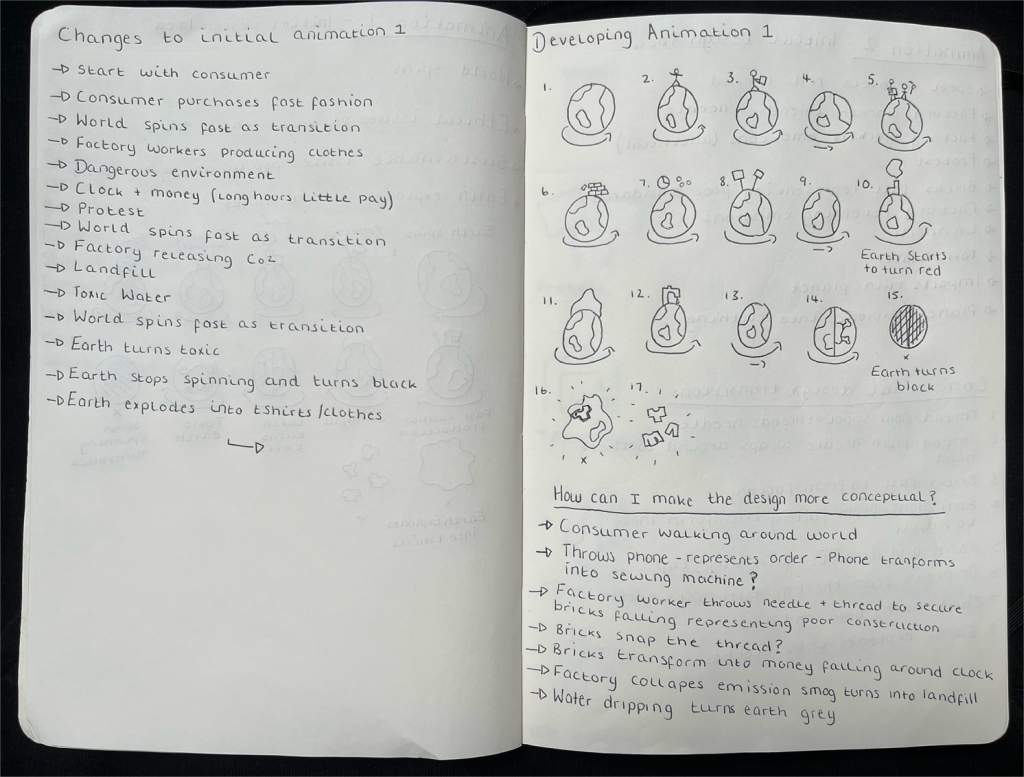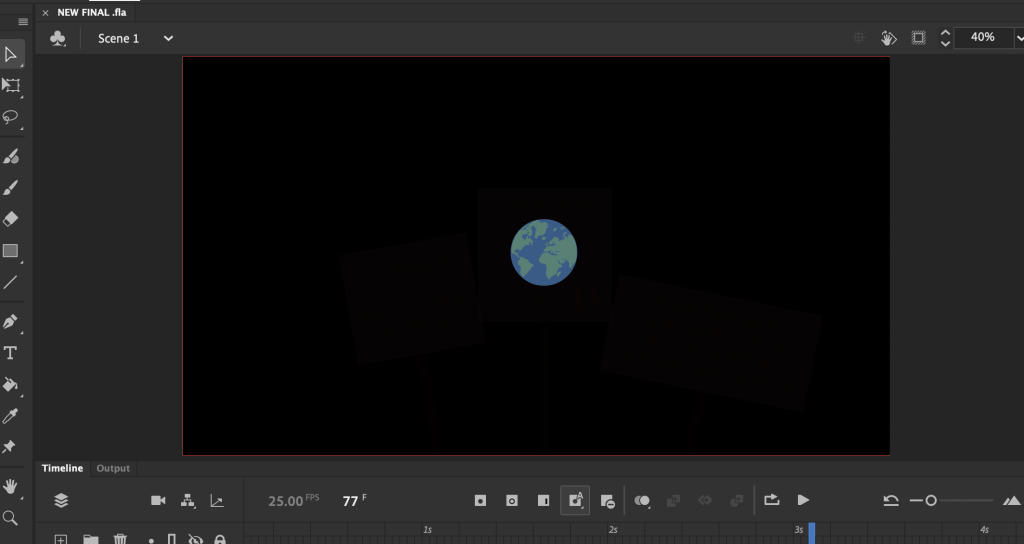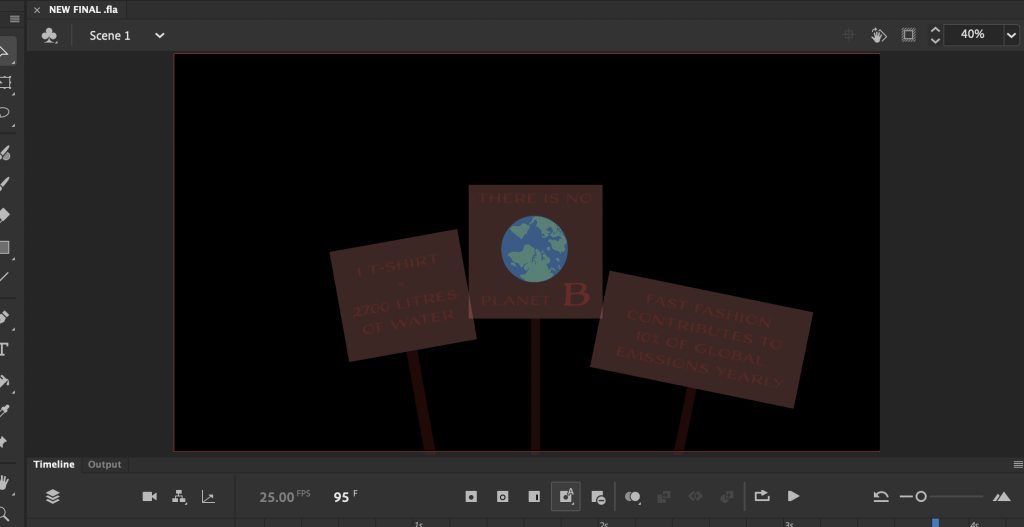Initial Animation Design Planning
I decided to base my animation on fast fashion. The subject combines sustainability and ethical issues that the population should be made more aware of. Educating myself and others on the consequences of fast fashion will hopefully positively change the way we shop.
The progression of creating initial animation designs included making a list of words that I believed were associated with the industry.
I began to develop storyboards surrounding initial thoughts and ideas, including ethical and sustainable examples.
The first animation is the developing final design. The animation uses earth in an impactful way to portray the message of some of the harmful consequences of the fast fashion industry.

Development of Animation Design
Further developing the initial animation design, changes were made to the storyboard enhancing the overall message. The addition of a consumer placing an order before the consequences are communicated added to the overall flow of the message. This is because without the consumer fast fashion wouldn’t exist.
Upon examining how the animation would play out it became apparent that the design held little to no conceptual design transitions. I began to take notes on how I could implement conceptual design into the animation. Adding movement to the planet and the consequences themselves made room for more conceptual transition ideas.



Initial Animation Design Planning – Final Design
After planning and developing the first animation design I decided to make some changes to the concept. The final animation will focus on some of the leading sustainability issues surrounding fast fashion such as emissions and landfill.
The first reason I decided to redevelop my animation was that I struggled to figure out how to implement conceptual design transitions between the keyframes. The second reason behind changing the animation slightly is the fact that I have no previous experience using Animate and after experimenting with the software I have realised that I don’t have a long enough timeframe to produce the whole animation at a high standard which meant I had to sacrifice some initial ideas.

Development of Animation Design – Final Design
Redeveloping the final design has made it easier to implement conceptual design transitions, such as adding transformations between key frames that form a connection and help the animation flow from scene to scene. The images below are showing the development of the animation in frames, this helped me understand how the animation will transition between scenes. The animation starts with the earth spinning which transitions into a protest representing sustainability issues surrounding fast fashion, which then transitions back into the earth. The final frames involve the earth disappearing into space and exploding into clothing which will fill the screen at the end. The aim of the animation is to show how the fast fashion industry is taking over the world.
Developing the animation without the final background made it easier to implement and understand how to make the transitions work smoothly together, making sure to edit each asset separately to the correct motion tweak. The final animation will have a developed backdrop behind the protest representing landfill and emissions as seen in the initial animation design.


